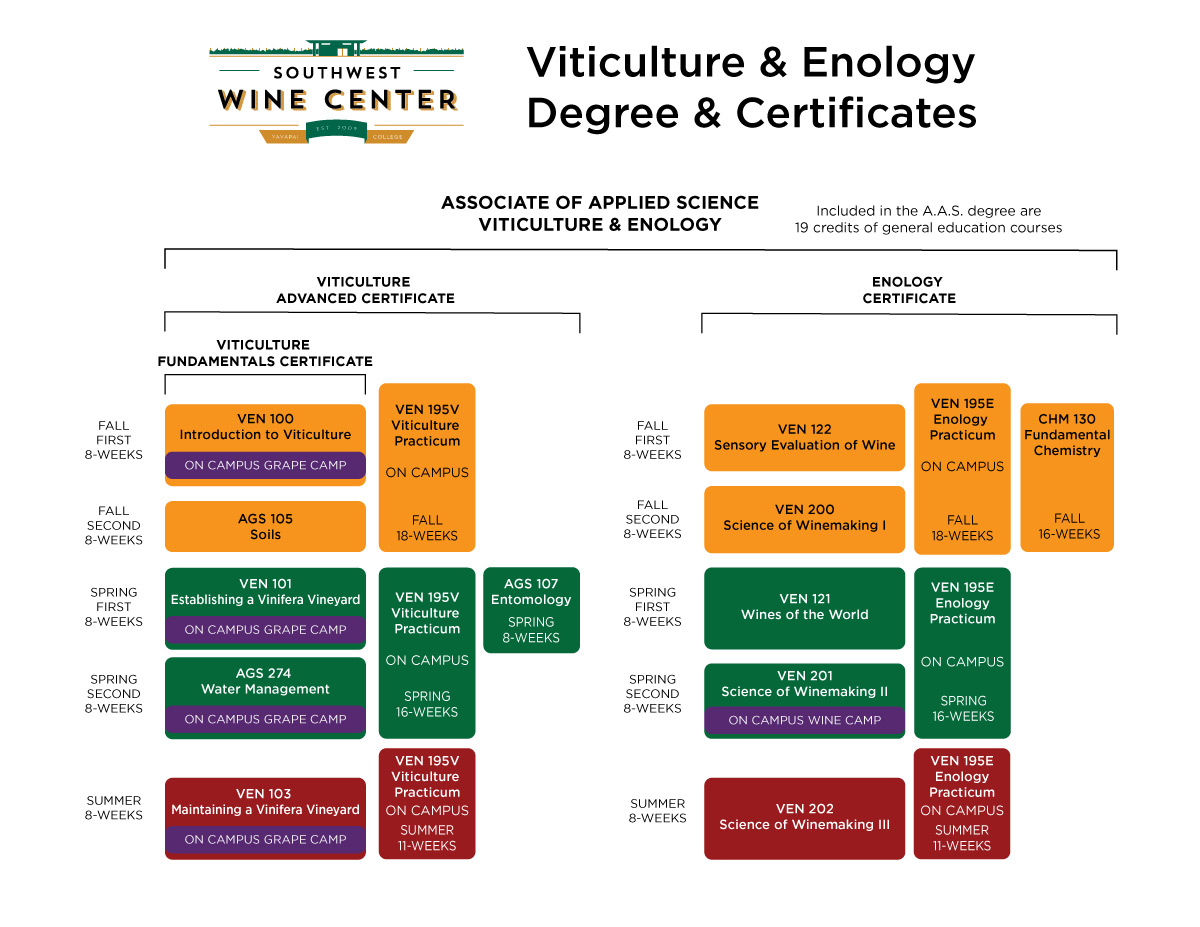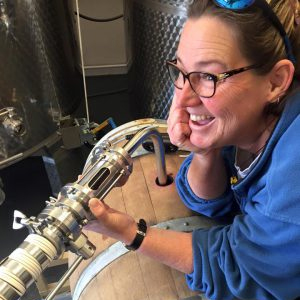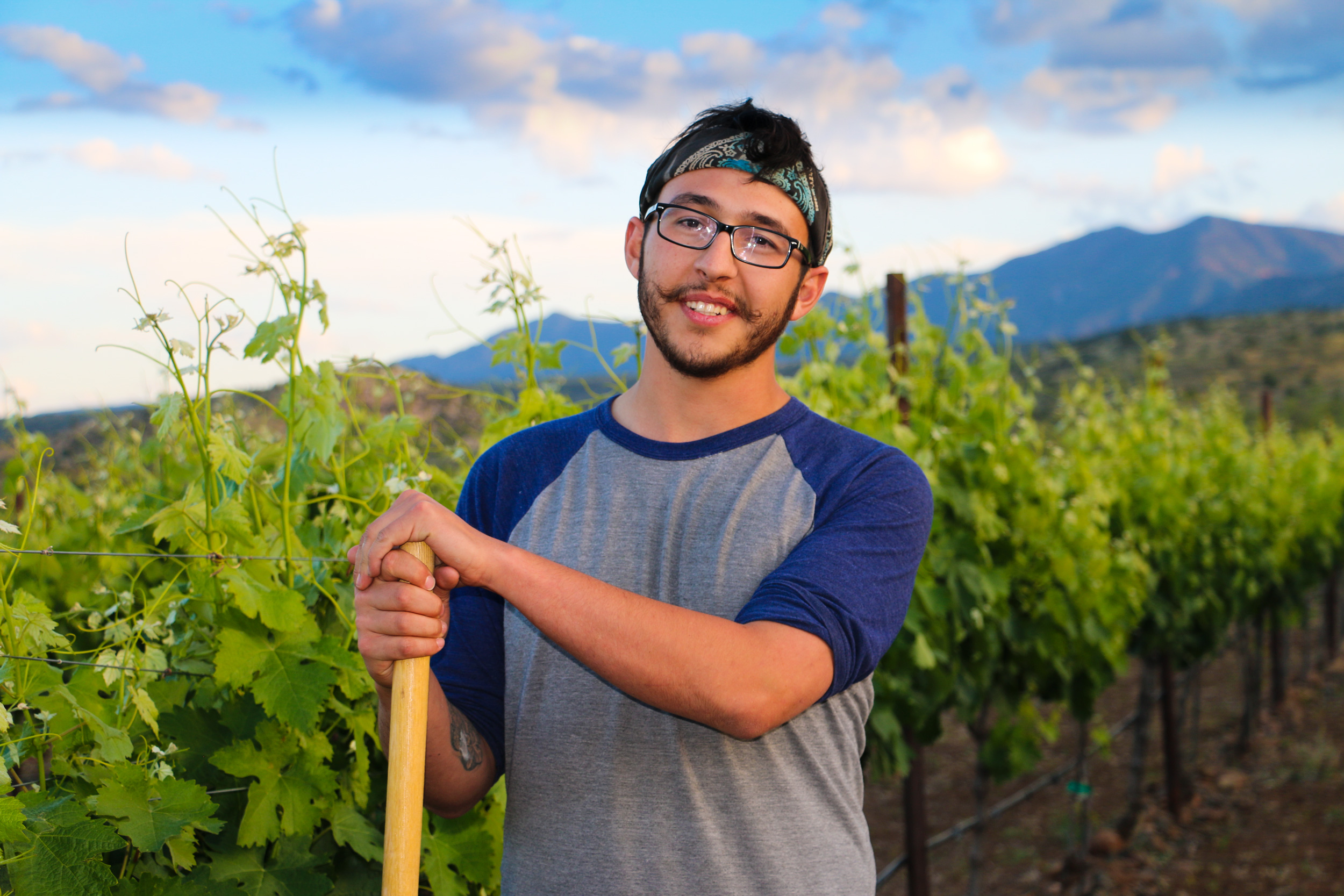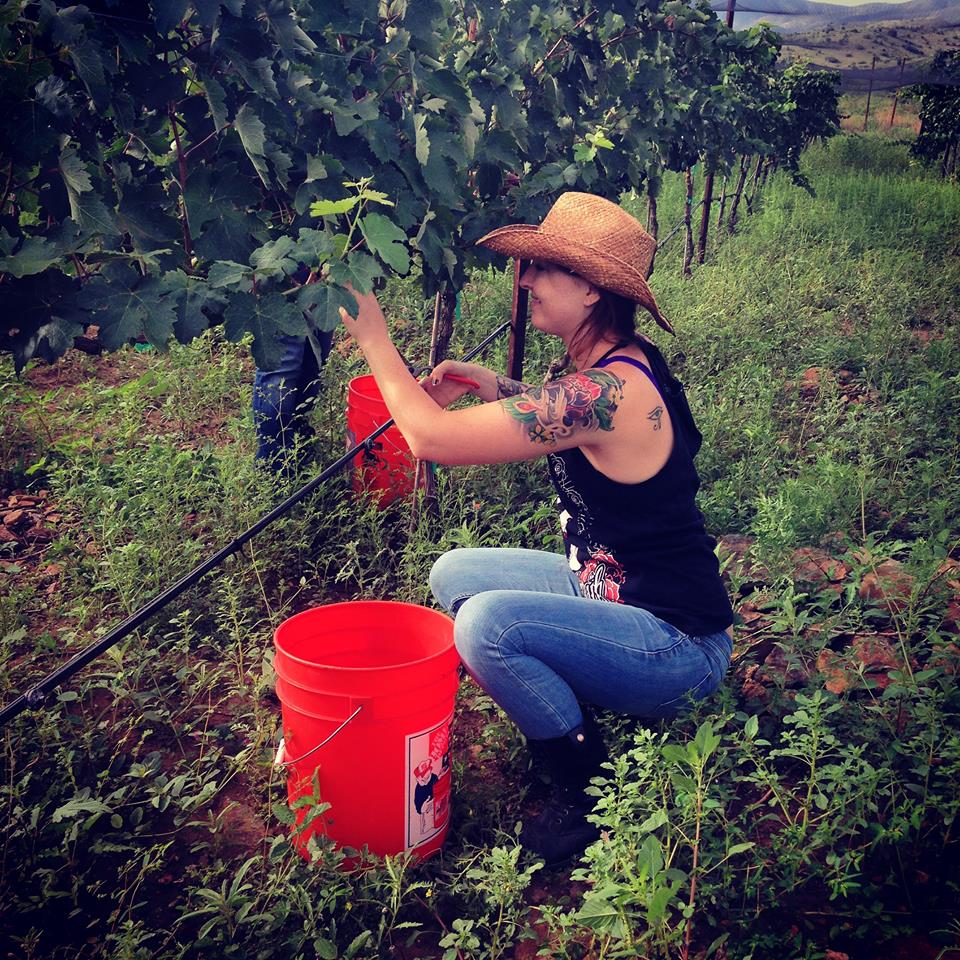Your Pathway to Success

AGS 105 - Soils (Class Description)
Comprehensive overview of the types of soils commonly found in North America with special emphasis on Southwestern soils. Course investigates the origin, formation, physical and chemical properties of soils and emphasizes soil testing, fertilization, and modifications to soils commonly found in landscapes, gardens and turf.
AGS 107 - Entomology (Class Description)
Fundamental approaches in the control of greenhouse pests. Categories of pests, management practices, herbicide use, alternative pest control techniques, safety, and integrated pest management.
AGS 274 - Water Management (Class Description)
Irrigation techniques for golf courses, greenhouses, aquaculture, and horse production including sizing pipes and fittings, backflow prevention, filtration, pumps, sprinklers, spraybooms, misters, and valves. Includes code requirements, blueprint reading, and bidding.
CHM 130 - Fundamental Chemistry (Class Description)
Introduction to the study of chemistry as a basis for understanding our complicated world. Overview of classification, structure, and chemical behavior, including inorganic, organic, and biological materials. Prerequisite: MAT 092 or one year of high school algebra or satisfactory score on mathematics skills assessment. Reading Proficiency.
VEN 100 - Introduction to Viticulture (Class Description)
World history of grapes and their production. Emphasis on the varieties of grapes, grapevine biology and physiology, vineyard management, and harvest and post-harvest operations.
VEN 101 - Establishing a Vinifera Vineyard (Class Description)
Introduction to the processes of establishing a vineyard. Emphasis on site selection, vine varieties, soil preparation, planting methods, vineyard layout, and equipment requirements. Prerequisite: VEN 100 (May be taken concurrently).
VEN 102 - Maintaining a Vinifera Vineyard (Class Description)
VEN 121 - Wines of the World (Class Description)
Wines produced throughout the world with an emphasis on history, the growth of grapes, wine production, geography and cultural relevance of different wine types and growing regions. In-depth classification and critique of “New World” versus “Old World” wine regions and styles. Winemaking methods, service, laws and regulations of the major wine regions. Students will taste, evaluate and identify various wine styles. Must be 21 years of age or older to enroll.
VEN 122 - Sensory Evaluation of Wine (Class Description)
Sensory evaluation specific to wine production with a focus on environmental and cultural winemaking practices contributing to the character of a wine. Basic elements of wine through sensory evaluation including the effects of appearance on taste perception, as well as olfactory and physiological taste mechanisms. Emphasis on specific wine varietals, regions, use of oak in winemaking, secondary fermentation, characteristics of individual wine components and wine flaw threshold identification. Designed for those who need to develop an understanding of the principles of sensory evaluation used in winemaking: the wine enthusiast who is interested in reaching advanced levels of appreciation, the wine steward, the wine merchant, and ultimately the enologist, who by the nature of their profession need to discern flavors and establish tasting benchmarks. Must be 21 years of age or older to enroll.
VEN 195E - Winemaking Practicum (Class Description)
Practical experience in winemaking while working at an approved winery and receiving supervision from a professional vintner. Students must complete a fall and spring practicum as well as VEN 195ES in the summer. Must be 21 years of age or older to enroll. [Repeatable for a total of 4 credit hours towards degree/certificate requirements. ] Prerequisite: VEN 200 (May be taken concurrently).
Learning Objectives:
COURSE CONTENT: 1. Cellar operations including sanitation, racking, filtration and bottling 2. Winery sanitation procedures 3. Processing incoming grapes for winemaking 4. Equipment setup of the destemmer, crusher and press 5. Pump and hose layout for safe transfer of juice and wine 6. Wine lab analysis 7. Standardization of solutions and verification of the accuracy in lab analysis 8. Barrel topping, steaming and maintenance 9. Operation of bottling equipment (sparger, filler, corker, capsule spinner, etc.) 10. Laboratory fining and stabilization trials 11. Calculation of juice, must and wine additions 12. Inoculation and fermentation monitoring 13. Filtration integrity testing 14. Maintaining the order and appearance of the wine cellar 15. Accurate and compliant cellar and bottling records 16. Wine blending and blind sensory evaluation trials LEARNING OUTCOMES: 1. Safely set up grape processing equipment. (3-5, 14) 2. Perform the racking and transfer of juice/wines in accordance with the standard operating procedures. (1, 5) 3. Clarify and stabilize production wines. (1, 6, 10, 11) 4. Perform cleaning and sanitation of cellar and bottling equipment. (1, 2, 8, 9, 13, 14) 5. Assess the chemical composition of a wine through laboratory analysis. (6, 7, 10, 11) 6. Inoculate juice or must for fermentation. (11, 12) 7. Manage fermentation temperatures and punch downs on red grapes. (12) 8. Facilitate proper record keeping and bottling reporting. (15) 9. Participate in blending and sensory evaluation trials of production wines. (16) 10. Prepare wine for bottling. (1, 6, 8-10, 13)
VEN 195ES - Winemaking Practicum (Class Description)
Practical experience in winemaking while working at an approved winery and receiving supervision from a professional vintner. Students must complete a fall and spring practicum as well as VEN 195ES in the summer. Must be 21 years of age or older to enroll. [Repeatable for a total of 4 credit hours towards degree/certificate requirements. ] Prerequisite: VEN 200 (May be taken concurrently).
Learning Objectives:
COURSE CONTENT: 1. Cellar operations including sanitation, racking, filtration and bottling 2. Winery sanitation procedures 3. Processing incoming grapes for winemaking 4. Equipment setup of the destemmer, crusher and press 5. Pump and hose layout for safe transfer of juice and wine 6. Wine lab analysis 7. Standardization of solutions and verification of the accuracy in lab analysis 8. Barrel topping, steaming and maintenance 9. Operation of bottling equipment (sparger, filler, corker, capsule spinner, etc.) 10. Laboratory fining and stabilization trials 11. Calculation of juice, must and wine additions 12. Inoculation and fermentation monitoring 13. Filtration integrity testing 14. Maintaining the order and appearance of the wine cellar 15. Accurate and compliant cellar and bottling records 16. Wine blending and blind sensory evaluation trials LEARNING OUTCOMES: 1. Safely set up grape processing equipment. (3-5, 14) 2. Perform the racking and transfer of juice/wines in accordance with the standard operating procedures. (1, 5) 3. Clarify and stabilize production wines. (1, 6, 10, 11) 4. Perform cleaning and sanitation of cellar and bottling equipment. (1, 2, 8, 9, 13, 14) 5. Assess the chemical composition of a wine through laboratory analysis. (6, 7, 10, 11) 6. Inoculate juice or must for fermentation. (11, 12) 7. Manage fermentation temperatures and punch downs on red grapes. (12) 8. Facilitate proper record keeping and bottling reporting. (15) 9. Participate in blending and sensory evaluation trials of production wines. (16) 10. Prepare wine for bottling. (1, 6, 8-10, 13)
VEN 195V - Viticulture Practicum (Class Description)
Practical experience in vineyard operations partnering with an approved vineyard, Students must complete a fall and spring practicum as well as VEN 195VS in the summer. [Repeatable for a total of 4 credit hours towards degree/certificate requirements. ] Prerequisite: VEN 100 (may be taken concurrently).
Learning Objectives:
COURSE CONTENT: 1. Quality Assurance 2. Canopy Management 3. Trellis Systems 4. Harvest Operations 5. Diseases and Pests 6. Lab Analysis 7. Crop Estimates 8. Fertility Plan 9. Petiole Analysis 10. The U or Lyre System LEARNING OUTCOMES: 1. Assess and maintain crop health. (1-3,8,9) 2. List and describe the characteristics of canopy ideotype. (2,10) 3. Describe and collect fruit samples for harvest parameters. (4) 4. Collect and perform lab analysis. (6) 5. Predict and plot harvest date and crop estimate. (7) 6. Plan and manage proper post-harvest monitoring. (7,8) 7. Manage proper pre-harvest operations. (7,8) 8. Identify major insect and weed pests in a given location. (5) 9. Identify and describe major fungal diseases in a given location. (5) 10. Evaluate existing management strategies for identified pests and diseases. (5) 11. Apply spray schedule to accomplish the goals of a stated pest management program. (5) 12. Discuss the water management strategy at your vineyard site. (1,8) 13. Identify and preform proper suckering and shoot thinning techniques. (1-3,9) 14. Apply proper cluster thinning, shoot positioning and leaf removal techniques. (1-3,9,10)
VEN 195VS - Viticulture Practicum (Class Description)
Practical experience in vineyard operations partnering with an approved vineyard, Students must VEN 195VS in the summer. [Repeatable for a total of 4 credit hours towards degree/certificate requirements. ] Prerequisite: VEN 100 (may be taken concurrently).
Learning Objectives:
COURSE CONTENT: 1. Quality Assurance 2. Canopy Management 3. Trellis Systems 4. Harvest Operations 5. Diseases and Pests 6. Lab Analysis 7. Crop Estimates 8. Fertility Plan 9. Petiole Analysis 10. The U or Lyre System LEARNING OUTCOMES: 1. Assess and maintain crop health. (1-3,8,9) 2. List and describe the characteristics of canopy ideotype. (2,10) 3. Describe and collect fruit samples for harvest parameters. (4) 4. Collect and perform lab analysis. (6) 5. Predict and plot harvest date and crop estimate. (7) 6. Plan and manage proper post-harvest monitoring. (7,8) 7. Manage proper pre-harvest operations. (7,8) 8. Identify major insect and weed pests in a given location. (5) 9. Identify and describe major fungal diseases in a given location. (5) 10. Evaluate existing management strategies for identified pests and diseases. (5) 11. Apply spray schedule to accomplish the goals of a stated pest management program. (5) 12. Discuss the water management strategy at your vineyard site. (1,8) 13. Identify and preform proper suckering and shoot thinning techniques. (1-3,9) 14. Apply proper cluster thinning, shoot positioning and leaf removal techniques. (1-3,9,10)
VEN 200 - Science of Winemaking I (Class Description)
Winemaking principles of fruit selection, pre-harvest analyses, fruit processing, juice additions, alcoholic and malo-lactic fermentations. Includes winery hygiene and safety. Must be 21 years of age or older to enroll.
VEN 201 - Science of Winemaking II (Class Description)
Chemistry of winemaking, wine analysis and quality control. Emphasis on wine composition, wine analytical techniques, and the relevance of these analyses to winemaking decisions. Includes wine filtration and post-fermentation wine stewardship. Must be 21 years of age or older to enroll. Prerequisite: VEN 200.
VEN 202 - Science of Winemaking III (Class Description)
Chemistry of winemaking, wine analysis and quality control. Emphasis on wine composition, wine analytical techniques, and the relevance of these analyses to winemaking decisions. Includes wine filtration and post-fermentation wine stewardship. Must be 21 years of age or older to enroll. Prerequisite: VEN 201.
On Campus Grape Camp (Class Description)
The grape camps are weekend hands-on labs which take place in the Southwest Wine Center’s vineyard alongside Yavapai College’s viticulture faculty. These hands-on labs provide the opportunity to apply the theory discussed in the class in a commercial scale production vineyard. These lab’s emphasis on the problems of grape production in hot and dry climates.
Students who enroll in the Enology Practicum course, VEN 195E, make wine on an industry scale under the supervision of the Yavapai College instructors. The winemaking tasks which take place at the SWC follow the same seasonal schedule as the local wineries. The life-cycle of our wines begins at grape harvest in the late summer/early fall. Students follow the production of the wine through processing, fermentation, racking, lab analysis, blending, fining, filtration, and bottling. Once the final product is labeled with student photographs and tasting notes it will be made available for sale in the SWC Tasting Room.



